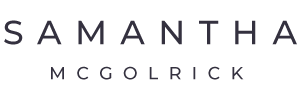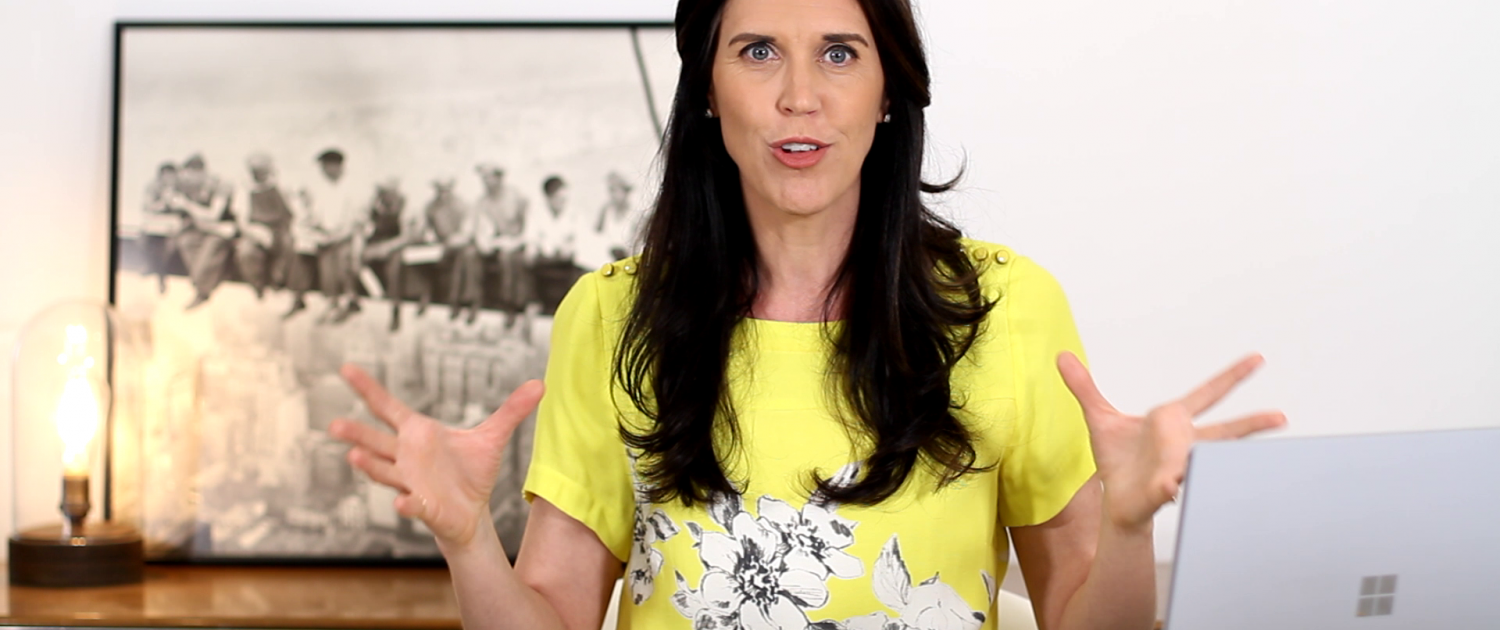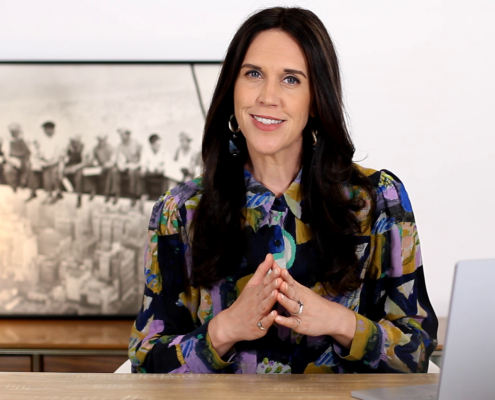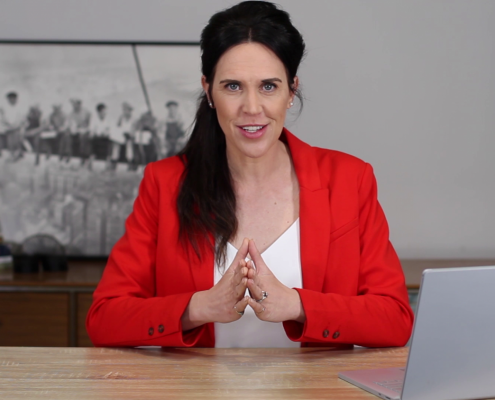In a previous video I proposed that if your board wants to ensure that members are open to learning from significant events that happen in other organisations so as to not miss red flags in their own, we need to revisit our paradigms, mental models, and mindsets and importantly, know which ones we can no longer rely on.
These three phenomena are often used interchangeably, but they are different, yet interconnected and together they can become an insurmountable and impenetrable barrier to change. It’s proposed that each of these phenomena reinforce the other and together they inform our behaviour.

Nested Theories of Action, Duffy, F.M., 2009
They’re pretty powerful, so in this video we’re going to take a better look at paradigms. What are they, and what are the two dominant or controlling paradigms in our boardrooms today.
WHAT IS A PARADIGM?
A paradigm is a combination of concepts, values, perceptions and practices that are shared by a community and form their perception of reality, and this paradigm then informs how they organise themselves.
Because a paradigm is a group phenomenon, it’s quite similar to culture. In his book The Third Wave, Toffler (1980) described three types of societies based on the concept of “waves.” Each wave pushes the older societies and cultures aside. Each “wave” was actually the dominant or controlling paradigm of its time.
For example, while we have moved through many different organisational theories over the last century, our understanding of how ‘work’ gets done has been guided by classical mechanics, or a linear thinking world view. Linear thinking suggests that things happen in a straight line; that is, one thing, causes the next thing, which causes the next thing, and so on. It’s often described in terms of causation, as Event A, causes Event B, which causes Event C, you get the picture. It’s a fairly simplistic, mechanical way of thinking. So when you apply linear thinking to the way our work gets done, there’s an assumption that our work or the system in which we work is not complex; that is, you could reduce or break down how work gets done into parts or steps, across departments or teams, that line up in a sequential fashion, suggesting that task A in this team, will influences how task B is done in this team, and that influences the work of task C in another team, and so on.
But does that sound like a true picture of how work gets done in your organisation?

linear thinking paradigm
Linear thinking is often associated with a Newtonian view of the way things operate. The key thing about the Newtonian view is that the world is a machine that is based on simple principles. Meaning that our work and the way our organisation or the system works is simple. And we’re not talking about whether your organisational structure or processes or your governance framework is complicated because complicated and complex are not synonyms. Complicated problems can be hard to solve, but they are addressable with rules and recipes, like the algorithms that place ads on your LinkedIn or Facebook feeds. Complicated problems can be resolved with systems and processes, like the hierarchical structure that most companies use to command and control employees.
So I’m not talking about ‘complicated’, I’m talking about complexity, and the Newtonian view suggests that our work is not complex.
You might compare the Newtonian view to Classical organisational theory, and Scientific Management and Administrative theories of organisational behaviour, because they too undervalue the interconnectedness and interdependence between humans and their environment and technology and these are the things that make our work and how our organisation operates, complex.
And this is important to keep in mind, solutions to complicated problems, which can include linear thinking, don’t work as well, if at all, with complex problems. Complex problems involve too many unknowns and too many interrelated factors to reduce the solution down to rules and processes.
A technological disruption like blockchain is a complex problem. A competitor with an innovative business model, like Uber or Airbnb, are complex problems. There’s no algorithm or rule that will tell anyone exactly how to respond to these emerging business models or technological disruption or explain how they came to fruition by looking at a sequence of events.
For example, we can’t put the emergence of Airbnb down to Event A caused Event B, which caused Event C – and there you go, you’ve Airbnb. No, Airbnb emerged from various factors such the need for those going on holiday to want instant access to book accommodation, the needs of homeowners to hire out a room or guest unit as a means to bring in extra cash flow, or changes in technology that made apps commonplace making it logical for people to book accommodation through an app. And there’s a lot of other environmental, cultural and technological reasons that the world became a melting pot for companies like Uber and Airbnb. The key takeaway though in terms of understanding complexity vs linear thinking, is that you can’t boil down how these companies came to fruition through a simple sequence of events AND there’s no algorithm or rule that will tell any of us exactly how to respond to these emerging business models.

This is really key to understanding how our organisations work and how work gets done, because linear thinking or a Newtonian world view oversimplifies the systems in which we work and the various factors that influence how we work. Linear thinking doesn’t account for how we are all addressing goal conflict on a daily if not hourly basis; such as, being efficient, but thorough, while being safe, or taking time for coaching and leadership vs meeting production targets or incentives. Our work is also influenced by the limited resources we’re often working with, and a web of relationships that exist inside and outside our organisation that inform our priorities. These relationships might be personal, professional, organisational, societal – they’re all the little things that cause us to think twice before taking action and they ensure that our work is not done in a linear fashion, it’s more circular in nature, and dynamic, where everything is interconnected.

non-linear thinking paradigm
This circular nature of how work is done is a characteristic of complex systems, and in complex systems, interactions between all the parts in the system and with its environment are non-linear, which guarantees that small events can produce large results. And it’s why we need to account for the influence that the board can have on people’s decision-making, or how work gets done, because in complex systems, your decisions in the boardroom, which might be considered insignificant, can have a significant influence on the organizational climate, and therefore the culture, and therefore outcomes.

Now the good thing is, new-age, or what’s called Modern organisational theory, proposes that an organisation is a system that changes with the change in its environment, both its internal and external environment. And the system’s behaviour, that is, how things get done and the structures and processes that exist, will emerge from the collective interactions between all the actors in the system and from their environment; and it’s that emergent behaviour that we need to understand to appreciate how work really gets done, and the board’s influence. This is systems thinking, which is increasingly becoming the dominant paradigm of understanding how work gets done and how to solve complex problems that are rooted in uncertainty.

Ok, so now that we have a general understanding of paradigms and the two dominant or controlling paradigms, tune in next week when I talk about the mental models and mindsets that fallout of these paradigms and how they influence your decision making, and your organizational culture.
Well, I hope this has helped you in your quest to know What to Ask and When to Act.
Be brave and stay true to your commitment to lead from the heart and I am confident you will reap the rewards.
All my best,
Sam








Let us know what you have to say:
Want to join the discussion?Your email address will not be published.